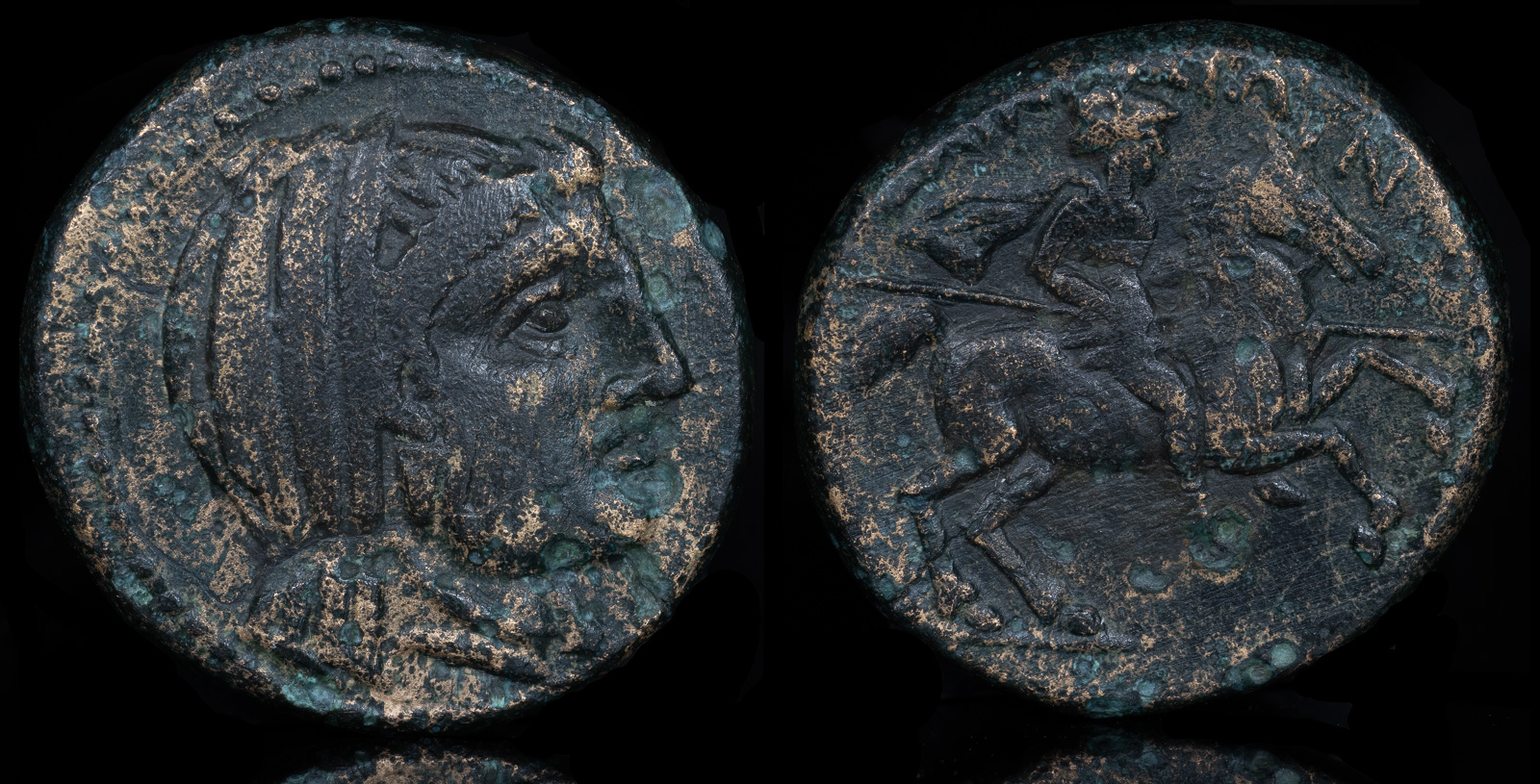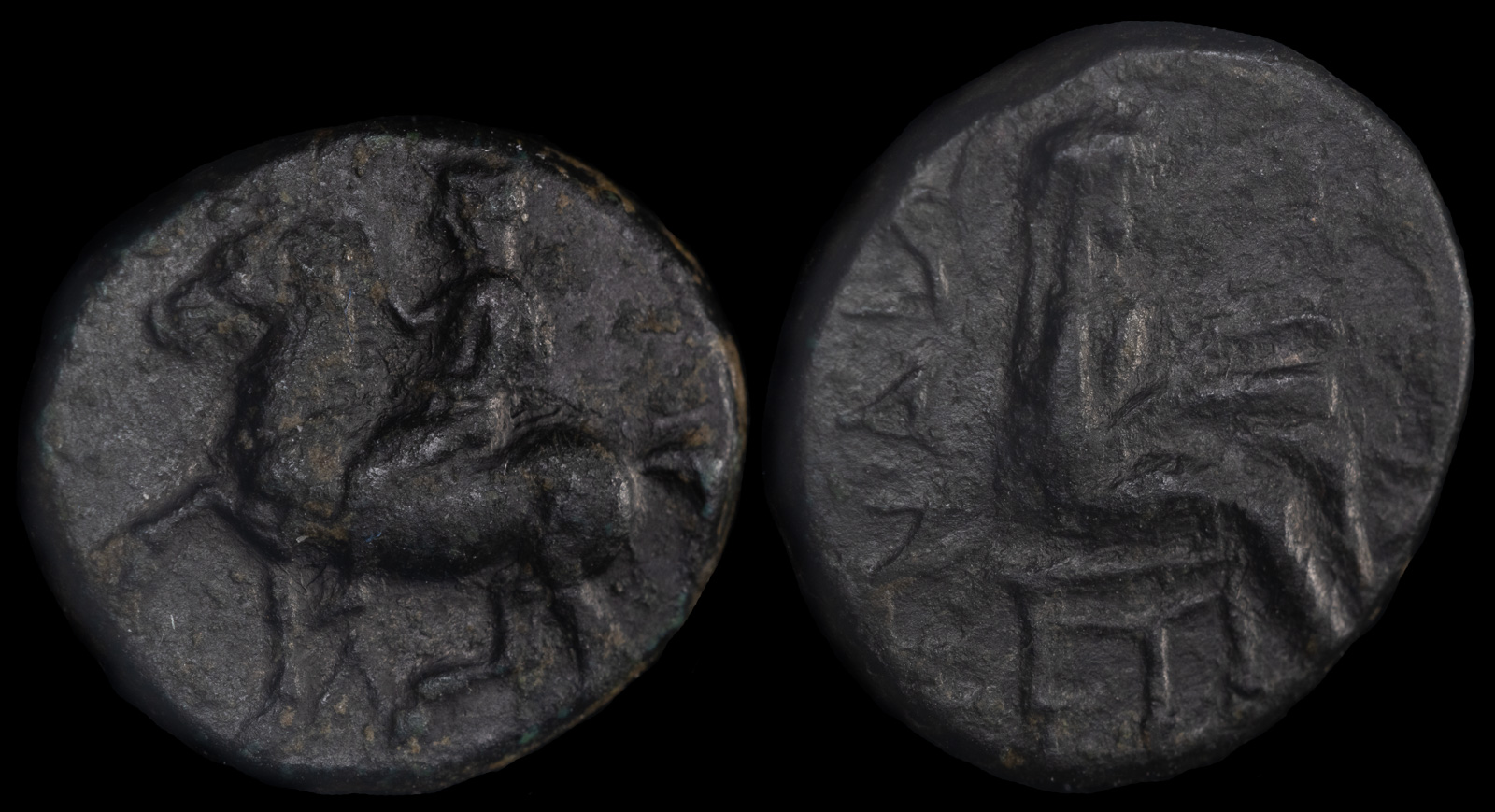
Thessaly, Pelinna
Æ Dichalkon (20mm, 7.49g, 12h)
late 4th to early 3rd centuries BCE
Head of Mantho veiled r. R/ Helmeted Thessalian rider wearing chlamys and short tunic, charging r. with couched lance on prancing horse.
BCD Thessaly 534.1; Rogers 432; HGC 4, 275
I chose this coin primarily due to the image of the horse and rider. Pelinna was located in Thessaly, which was famous for its cavalry. This cavalry was a major asset for Alexander during his invasion of Persia, and numerous times Arrian mentions the Thessalian cavalry saving the day.
Therefore, this coin, which was minted around that time, serves as a “time portal” that allows us to glimpse these feared horsemen.

Pelinna, Thessaly
circa 350 BCE
14.26mm 2.60g
Horseman left
Mantho seated right opening a coffin. PELIN-NAIE
Pozzi / Boutin 2832
Pelinna also had a long history with Macedonia. It formed a beneficial alliance with Philip II, and Alexander the Great passed through it on his way from Illyria to Thebes. During the lives of Philip and Alexander, it stayed loyal to Macedon, which back then was a wise move.

Pelinna, Thessaly
circa 425-350 BCE
Ae Chalkous 14mm, 3.2gms
Obv: Warrior riding horse right, striking at fallen enemy to lower right
Rev: Warrior left, holding shield and preparing to hurl spear
Rogers 426; BCD Thessaly II 521